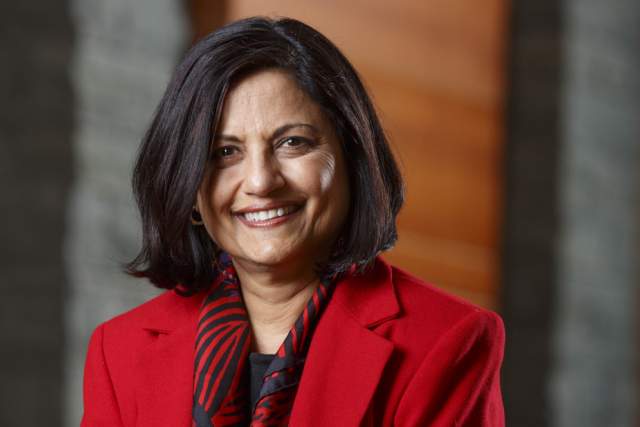When It’s OK to Be Bold
Punam Keller studies the role of negative emotions in risk taking.

The gender gap in risk seeking widens when women are anxious, a new Tuck study finds.
When Dean Matthew Slaughter asked Punam Anand Keller, the Charles Henry Jones Third Century Professor of Management, if she would consider taking a role as an academic dean, Keller could have thought about the offer in two general ways.
She might have been worried that an administrative job wouldn’t allow her the time to do the scholarly research she loves—on behavior change in health and financial settings. Or, she may have considered the offer an opportunity to try something totally different, help Tuck chart its course, and learn about herself and the nature of higher education. Keller chose to be bold, and today she spends most of her work time as the associate dean for innovation and growth, while fitting in teaching and researching when she can.
Keller reflected on that decision recently as she worked on a new paper titled “Gender and Risk: Emotional Fluctuations,” forthcoming in the Journal of the Association for Consumer Research. Specifically, she had noticed how, in previous studies, women were more risk averse than men when it came to decisions about their health and finances. “It made me wonder why,” she says, “and I started trying to figure it out, because I want women to take good risks.” For Keller, taking on a new role was a good risk—the consequences weren’t dire, and the odds were in her favor—and she set out to help women identify such opportunities in their own lives.
I started trying to figure it out, because I want women to take good risks.
Prior studies in this area have revealed three broad factors that contribute to the gender difference in risk taking. One is basic evolutionary theory, which dictates that men evolved to engage in riskier behavior because they had to go out and hunt for food. Another is cultural: many boys are brought up thinking they shouldn’t show fear or weakness, while girls are raised to be more nurturing. The third is power and status: historically, women couldn’t take risks because they just weren’t offered the same opportunities or agency as men.
Those factors caused Keller to reflect on how she could make a difference. “What can I change?” she asked herself. “I looked for factors I could have some impact on, and when I started searching the literature I came upon the role of negative emotions in risk seeking.”
In this study, Keller focused on anxiety and sadness and how those emotions impact risk seeking in adolescents (10-13 years old) and adults over 21. In the field study on adolescents, Keller distributed questionnaires to children that probed how often they felt sad or anxious in the previous two weeks. Then the respondents completed the Tolerance for Deviance Scale, a survey that’s been found to “predict a variety of risky behaviors such as unhealthy diet, poor dental hygiene, seat belt usage, and substance abuse,” Keller writes. She found that emotions have a stronger effect on risk assessment for girls than boys, that sadness increases risk seeking for girls but not boys, and that risk aversion is the strongest when girls are very anxious and very sad.
I looked for factors I could have some impact on, and when I started searching the literature I came upon the role of negative emotions in risk seeking.
In the study on adults, Keller recruited 390 subjects (the average age was 36), and asked them to read a scenario that evoked a state of anxiety or sadness. Then the participants completed the Domain-Specific-Risk-Taking scale. Afterward, Keller asked them if they used their emotions when completing the scale. As she expected, Keller found males to be more risk seeking than females. But the cause was something not documented before this study: anxiety. More precisely, Keller found that anxiety, which is triggered by a sense of uncertainty, causes women to forego risk in an effort to add certainty back into their life. Sadness, on the other hand, is a response to loss. That emotion makes women seek more risk, as a chance to offset the loss with a reward. In sum, the gender gap in risk seeking widens when women are anxious, and shrinks when the dominant emotion is sadness. Importantly, Keller isn’t saying that men don’t feel anxiety or sadness. “They just don’t act on it, especially when it comes to risk-related decisions,” she explains. That could be a benefit or a mistake, depending on the situation.
What does Keller want women to take away from this study? In general, the importance of self-awareness. “Don’t let anxiety hold you back from taking good risks,” she says. For men, the message is similar but the result will be different: listen to your anxiety, because it might prevent you from taking a bad risk.
*This article originally appeared in print in the winter 2018 issue of Tuck Today magazine.

